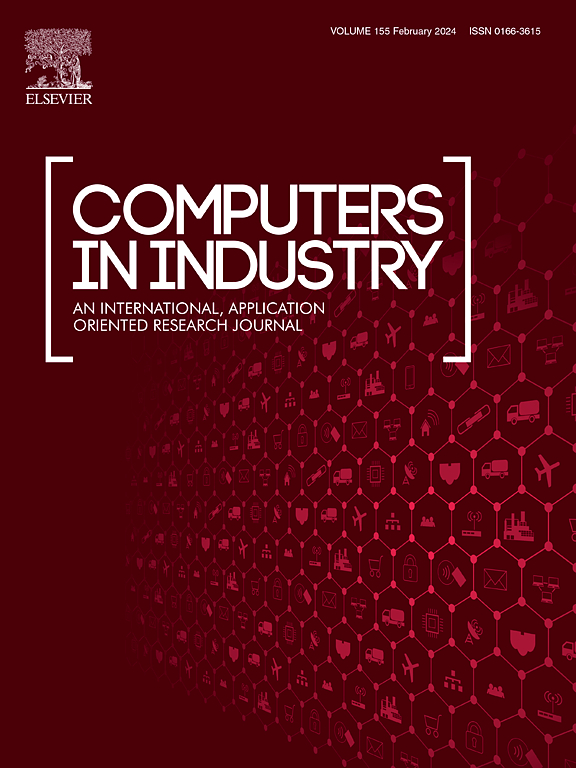一种用于冲压件裂纹检测的简单可靠的半监督异常检测网络
IF 8.2
1区 计算机科学
Q1 COMPUTER SCIENCE, INTERDISCIPLINARY APPLICATIONS
引用次数: 0
摘要
冲压件在工业制造中起着至关重要的作用,其表面裂纹的自动检测尤为重要。由于裂纹的罕见性和多样性,监督缺陷检测方法缺乏足够的数据,不能达到理想的结果。无监督异常检测算法不需要裂纹数据,可以识别出未知的裂纹。然而,当处理冲压件的复杂背景时,它们往往有很高的漏检率和误报率。为了解决这些问题,本文提出了一种简单可靠的半监督异常检测网络,考虑到实际生产中存在少量异常数据。该网络使用大量的正常样本和少量的异常样本来检测冲压件的表面裂纹。首先,使用预训练的特征提取器进行特征提取,并结合设计的特征自适应网络减少域偏差;其次,从正常图像中提取正常特征,在正常特征上加入噪声生成异常特征,在多尺度上从异常图像中提取异常特征,构建特征空间;最后,基于构造的特征空间训练一个简化的判别器,提高了计算效率,简化了部署过程。在实验中,我们与一家跨国公司合作,使用实际生产数据集进行验证。该算法在处理速度为19帧/秒的情况下,检测面积得分为98.2%,定位面积得分为97.9%。本文章由计算机程序翻译,如有差异,请以英文原文为准。
A simple and reliable semi-supervised anomaly detection network for detecting crack in stamped parts
Stamped parts play a crucial role in industrial manufacturing, and it is particularly important to automatically inspect their surface cracks. Since crack is rare and diverse, supervised defect detection methods lack sufficient data and cannot achieve ideal results. Unsupervised anomaly detection algorithms, which do not require crack data, can identify unknown cracks. However, they tend to have high rates of missed detections and false positives when dealing with complex backgrounds in stamped parts. To address these problems, this paper proposes a network called simple and reliable semi-supervised anomaly detection, considering the presence of a small number of anomalous data in actual production. This network uses a large number of normal samples and a small number of anomalous samples to detect surface cracks in stamped parts. Firstly, a pre-trained feature extractor is used for feature extraction, coupled with a designed feature adaptation network to reduce domain bias. Secondly, by extracting normal features from normal images, adding noise to these normal features to generate abnormal features, and extracting abnormal features from abnormal images at multiple scales, a feature space is constructed. Finally, by training a simplified discriminator based on the constructed feature space, computational efficiency is enhanced, and the deployment process is simplified. In the experiments, we collaborated with a multinational company, using an actual production dataset for verification. The proposed algorithm can achieve the score of area under the receiver operating characteristic curve of 98.2% for detection and 97.9% for localization at a processing speed of 19 frames per second.
求助全文
通过发布文献求助,成功后即可免费获取论文全文。
去求助
来源期刊

Computers in Industry
工程技术-计算机:跨学科应用
CiteScore
18.90
自引率
8.00%
发文量
152
审稿时长
22 days
期刊介绍:
The objective of Computers in Industry is to present original, high-quality, application-oriented research papers that:
• Illuminate emerging trends and possibilities in the utilization of Information and Communication Technology in industry;
• Establish connections or integrations across various technology domains within the expansive realm of computer applications for industry;
• Foster connections or integrations across diverse application areas of ICT in industry.
 求助内容:
求助内容: 应助结果提醒方式:
应助结果提醒方式:


